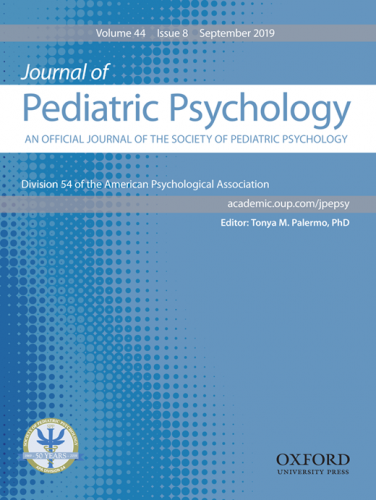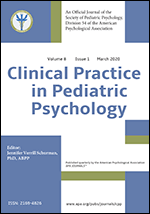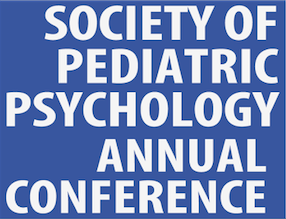Fact Sheet: Pediatric Spinal Cord Injury
A spinal cord injury (SCI) during childhood or adolescence produces sudden, dramatic changes in physical abilities that can impact virtually every area of a youth’s life. Sequelae of an SCI include loss of motor and sensory functioning, respiratory complications, neurogenic bladder and bowel (e.g., incontinence), autonomic and sexual dysfunction, as well numerous secondary acute and chronic health complications, such as pressure injuries, pain, and urinary tract infections.
Prevalence and Course
In the United States, approximately 18,000 new cases (excluding those who die at the location) of SCI are reported each year, with an estimated 291,000 persons currently living with SCI. Approximately 20 percent of traumatic SCIs occur in individuals younger than 21 years of age, with 3 to 5 percent occurring in those younger than 15. The most common etiologies in a pediatric population include motor vehicle crashes and injury during sports/recreation activities. Other mechanisms of injury include acts of violence (primarily gunshot wounds), illness/infection, and birth injuries. In addition to the frequent complications of SCI in adulthood, children with SCI also may experience unique complications such as hypercalcemia, scoliosis, and hip dysplasia. Life expectancy is a function of neurological level and category, with longer survival in those with less severe lesions. The most common causes of death in pediatric-onset SCI are pneumonia and septicemia. Life expectancy has not improved since the 1980s.
Health and Psychosocial Consequences
During acute treatment and rehabilitation, youth with SCI are often removed from the social context of school, peers, and community activities that had previously contributed to their sense of normalcy, identity, and self-efficacy. Returning home for the first time following the injury is a major step, for both children and their caregivers, in adjusting to life after SCI. It takes time for the youth to establish a new “normal” routine. Adolescents, in particular, may experience more difficulty due to dependence on others at a time when their autonomy was increasing. Youth with SCI are at an increased risk for symptoms of depression and anxiety, identity struggles, social isolation, nonadherence, and poor health-related quality of life. Estimates of depression and anxiety are 21% and 29%, respectively. In general, however, youth are resilient and demonstrate adjustment and growth following injury.
Evidence-based Assessment
The gold standard neurological assessment for documentation of level and severity of an SCI is the International Standards for Neurological Classification of Spinal Cord Injury (ISNCSCI). It is maintained by the International Standards Committee of the American Spinal Injury Association (ASIA) and the International Spinal Cord Society (ISCoS), with the most recent revision in April 2019, and is acceptable for use in children 6 years of age and older. The National Institute on Neurological Disorders and Stroke (NINDS) of the US National Institutes of Health (NIH) published Common Data Elements (CDEs) for use in research. ISCoS developed SCI Data Sets to create a common language among SCI communities, many of which have been incorporated into the NINDS SCI CDEs and recommendations.
Culture, Diversity, Demographic and Developmental Factors
Males are more likely to sustain SCIs during adolescence than females. Violence-related SCIs are more common in males, individuals from lower socioeconomic groups, and in African-American and Hispanic youth; among whom more than 50 percent of SCIs are caused by violence.
Evidence-based Interventions
ASIA provides e-learning modules on evidence-based practice guidelines for SCI. Cognitive-behavioral therapy, including trauma focused, acceptance and commitment therapy, and coping effectiveness training are primary psychological interventions. Evidence has also demonstrated the effectiveness of peer mentoring for individuals with SCI. Within the pediatric population, it is also critical to involve family members, particularly caregivers, who are also at increased risk for mental health problems.
Resources
- American Spinal Injury Association (ASIA) - professional organization focused on SCI care, education and research
- SCOPE - reports the current state of science in SCI, an affiliate of ASIA
- Steel Assembly - promote best practices in pediatric SCI through knowledge, education, and research; the pediatric arm of ASIA
- Craig H. Neilsen Foundation - funding agency for SCI research, education, and quality of life programs
- Christopher and Dana Reeve Foundation - agency funding SCI research, education, and advocacy
- Facing Disability - organization connecting individuals and families with SCI; has video series regarding life experiences with SCI
- ISCoS - international professional organization focused on SCI education, research, and clinical care
- Model Systems Knowledge Translation Center - conducts SCI research and develops patient and family materials
- Rick Hansen Foundation - develops SCI programs and initiatives to promote an accessible and inclusive world
- SCIRE Professional - reviews, evaluates, and translates published literature
References
- ASIA and ISCoS International Standards Committee. The 2019 revision of the International Standards for Neurological Classification of Spinal Cord Injury (ISNCSCI)—What’s new? (2019). Spinal Cord, 57(10), 815–817. doi: 10.1038/s41393-019-0350-9
- Carroll, A., Vogel, L., Zebracki, K., Noonan, V., Biering-Sorensen, F., & Mulcahey, M. (2017). Relevance of the international spinal cord injury basic data sets to youth: An inter-professional review with recommendations. Spinal Cord, 55(9), 875-881.
- DeVivo, M.J., & Chen, Y. (2011). Trends in new injuries, prevalent cases, and aging with spinal cord injury. Archives of Physical Medicine and Rehabilitation, 92(3), 332-338.
- Gassaway, J., Jones, M., Sweatman, W.M., Hong, M., Anziano, P., et al. (2017). Effects of peer mentoring on self-efficacy and hospital readmission after inpatient rehabilitation of individuals with spinal cord injury: A randomized controlled trial. Archives of Physical Medicine and Rehabilitation, 98, 1526-1534.
- Garma, S., Kelly, E.H., Daharsh, E.Z., & Vogel, L.C. (2010). Health-related quality of life after pediatric spinal cord injury. Journal of Pediatric Psychology, 36(2), 226-236.
- January, A., Kelly, E., Russell, H., Zebracki, K., & Vogel, L. (2019). Patterns of coping among caregivers of children with spinal cord injury: Associations with parent and child well-being. Families, Systems, & Health, 37 (2), 150-161.
- January, A., Kirk, S., & Zebracki, K., Chlan, K., & Vogel, L. (2018). Psychosocial and health outcomes of adults with violently acquired pediatric spinal cord injury. Topics in Spinal Injury Rehabilitation, 24(4), 363-370.
- Kennedy, P. (2009). Coping Effectively with Spinal Cord Injuries. A Group Program: Therapist Guide. Oxford: Oxford University Press.
- Mulcahey, M., Gaughan, J., Chafetz, R., Vogel, L., Samdani, A., et al. (2011). Interrater reliability of the International Standards for Neurological Classification of Spinal Cord Injury in youths with chronic spinal cord injury. Archives of Physical Medicine and Rehabilitation, 92(8), 1264–1269. doi: 10.1016/j.apmr.2011.03.003
- Mulcahey, M., Vogel, L., Sheikh, M., Arango-Lasprilla, J., Augutis, M., et al. (2017). Recommendations for the National Institute for Neurologic Disorders and Stroke Spinal Cord Injury Common Data Elements for Children and Youth with SCI. Spinal Cord, 55, 331-340.
- Scivoletto, G., Tamburella, F., Laurenza, L., Torre, M., & Molinari, M. (2014). Who is going to walk? A review of the factors influencing walking recovery after spinal cord injury. Frontiers in Human Neuroscience, 8 (March) [141].
- Vogel, L., Betz, R., Mulcahey, M., & Zebracki, K. (2018). Spinal cord injuries and disorders in children and adolescents. In S. Kirshblum & V. Lin (Eds.), Spinal Cord Medicine Textbook (3rd ed., pp. 926-954). New York: Demos Medical.
- Vogel, L., Zebracki, K., Betz, R. & Mulcahey, M. (2014). Spinal Cord Injury in the Child and Young Adult. London, UK: Mac Keith Press.
-
Zebracki, K. & Vogel, L. (2012). Epidemiology of childhood-onset spinal cord injuries in the United States. In V. Rahimi-Movaghar, S. Jazayeri, & A. Vaccaro (Eds.), Epidemiology of Spinal Cord Injuries (pp. 19-28). New York: Nova Science Publishers, Inc.



